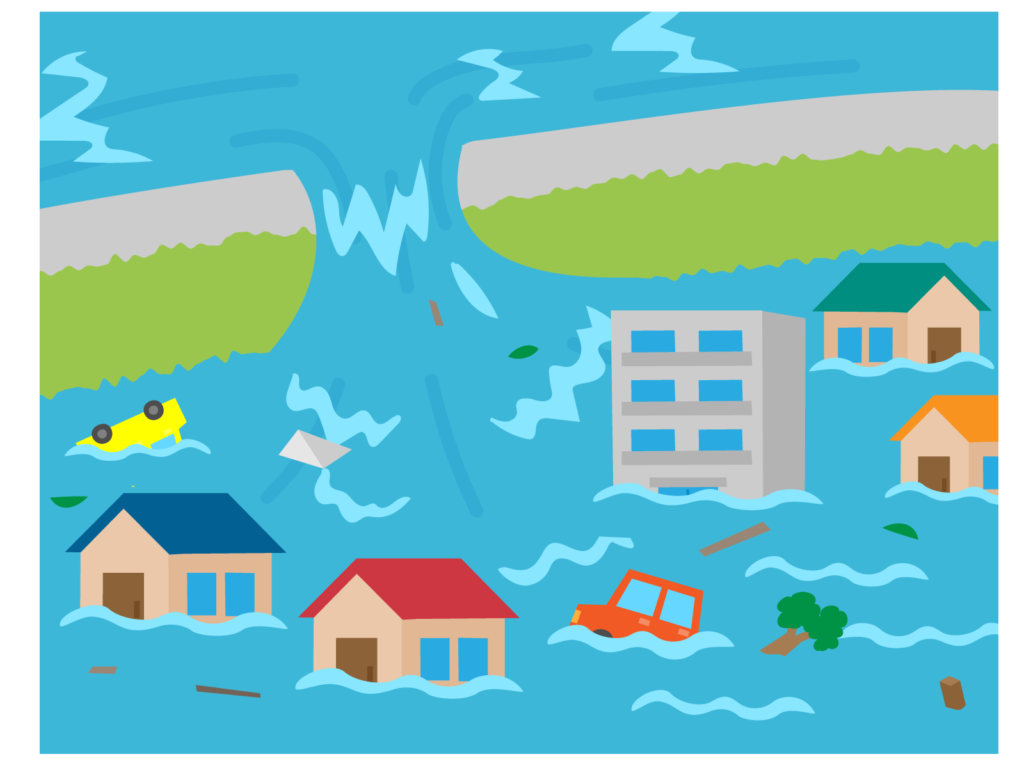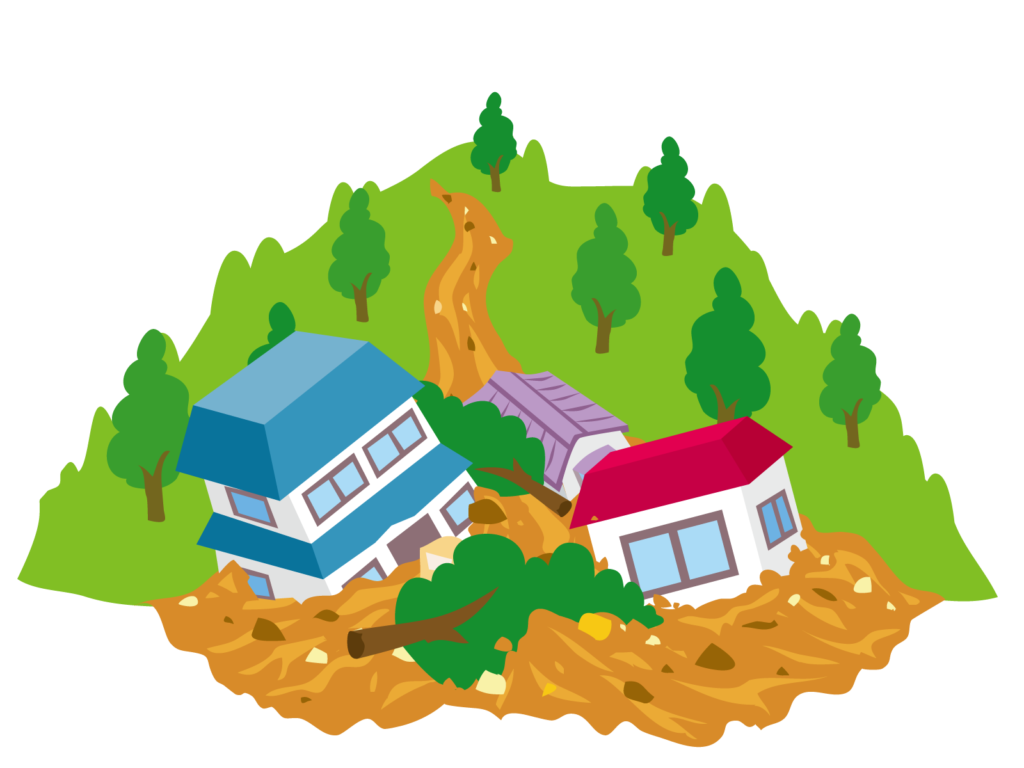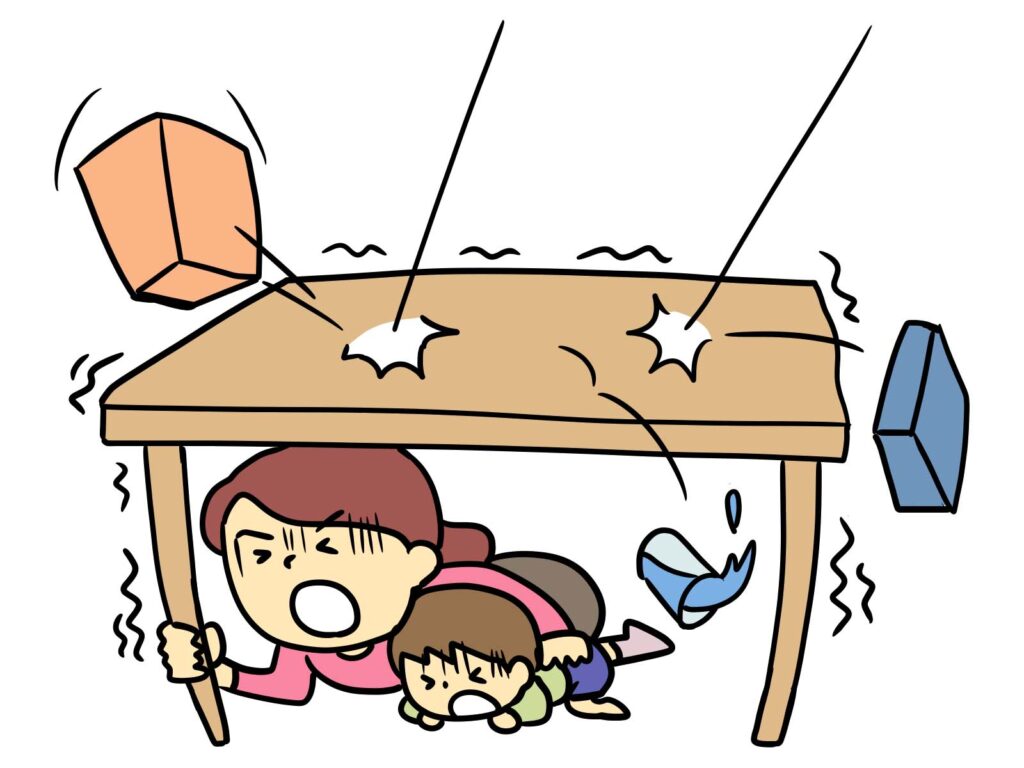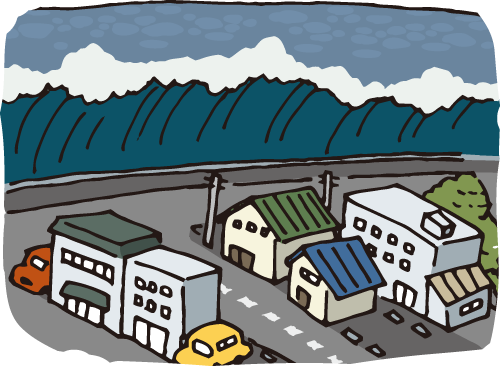Emergencies・Disasters
Before a Disaster Occurs
Everyday preparation
- Take part in disaster drills. Disaster drill information is available at your workplace, government (municipal) offices, international associations, or Japanese language schools.
- Check a hazard map to find the dangerous areas and safe evacuation sites.
- Create My-Timeline (your own action plan in preparation for water disasters).
Ibaraki prefecture “Let’s create My-Timeline (web version)” (Japanese)
- Get to know your neighbors.
- Decide with your family and friends how to contact each other during a disaster.
- Decide on a place to meet if you are separated from your family and friends.
- If you have children, confirm with their teacher the ways the school can contact you or pick up the children.
- Check the phone numbers for the government (municipal) offices or embassy.
- Keep the room safe by preventing shelves and drawers from falling over.
- Make an “emergency pack” and keep it somewhere easy to find.
Multilingual emergency packs display sheet (7 languages + easy Japanese)
- Prepare emergency supplies such as food, water, batteries, and flashlights that can last for around 3 to 7 days.
- Try to keep filling up your car each time the fuel gauge reaches around halfway.
Ibaraki International Association Disaster Manual
The disaster manual is posted in 15 languages for foreigners living in Ibaraki prefecture.
Typhoons・heavy rain
- There are many typhoons in summer and fall in Japan.
- Strong winds are expected when a typhoon strikes, so do not go outside.
- Stay away from the ocean and rivers since the waves will be higher and the water level of rivers will rise.
- Stay away from the mountains or cliffs since it is dangerous if the earth or rocks collapse.
- These rainfalls may cause floods (the river’s water levels increase, overflowing its banks) and landslides (collapse of a mass of earth from a mountain or cliff). Check a hazard map to find which areas are dangerous and where to evacuate.
- When you are in a place where there is a possibility of floods or landslides, evacuate to a safe place.


Earthquakes
When an earthquake occurs
When you are inside
- Leave a door open so that you always have a way to get outside,
- Watch out for furniture or other falling objects. Get under a table.
- When the shaking stops, turn off the gas stove.
- If you go outside during an earthquake, glass from windows or signboards could fall and hurt you. Wait until the shaking has stopped.
- Turn “off” the circuit breaker before escaping outside.

When you are outside
- Protect your head with a bag or book and move to a safe place.
- Stay away from walls and vending machines, as well as places where the soil is piled high, such as cliffs.
- Trains and buses may stop due to an earthquake. Please wait for a while in a safe place such as your workplace or school. Many people return at the same time, so it is dangerous because the stations and roads are crowded.
While driving
- When a large earthquake occurs in a coastal area, there might be a tsunami. Listen to the guidance and go to high ground.
- Search for tsunami information via TV, the Internet, and smartphone app “Safety tips” (link).
- If you receive an official tsunami advisory or tsunami warning that informs you of the possibility of a tsunami, go to high ground immediately.
- There might be multiple tsunamis, wait until you confirmed there are no more tsunamis before returning home
- Ask a Japanese person nearby “if there is a threat of tsunami” if you do not know.
Near the ocean or a river
- When a large earthquake occurs in a coastal area, there might be a tsunami. Listen to the guidance and go to high ground.
- Search for tsunami information via TV, the Internet, and smartphone app “Safety tips” (link).
- If you receive an official tsunami advisory or tsunami warning that informs you of the possibility of a tsunami, go to high ground immediately.
- There might be multiple tsunamis, wait until you confirmed there are no more tsunamis before returning home
- Ask a Japanese person nearby “if there is a threat of tsunami” if you do not know.

When evacuating
- Ask a Japanese person nearby “where you should evacuate to” if you do not know a safe place.
After an earthquake occurred
- Do not light the gas stove if you smell gas. There might be a risk of gas leaks due to broken gas pipes.
- Fill your bathtub with water. Due to broken water pipes, there is a possibility of a water shortage.
- If your house is damaged and you cannot live there, you can stay in an evacuation shelter for a while with other people. Food and other necessities are provided free of charge at evacuation shelters.
Nuclear accident
There are nuclear power facilities in Ibaraki.
When a nuclear accident occurs
Enter a building immediately in order to reduce radiation exposure. Do not act rashly and be sure to get accurate information from government websites, TVs, and applications that support foreign languages.
If you are inside
- Close doors and windows, turn off air circulation systems, and make sure air does not enter from outside.
- Stay away from the window as much as possible.
- If you have come in from outside, wash your hands and face. Change your clothes and keep the clothes you were wearing in a plastic bag.
If you are outside
- If you cannot enter a building immediately, wear a mask or firmly cover your mouth and nose with a wet towel or handkerchief to protect yourself from inhaling radioactive substances.
Links
Before a disaster occurs
Cabinet Office Helpful Apps and Websites in the Event of Disaster
A leaflet that introduces smartphone apps and websites that provide information on the preparation for natural disasters in Japan.
Japan Meteorological Agency Disaster information website
Weather (weather, heavy rain, high temperature, etc.)/ earthquake/ tsunami/ volcano information
Ibaraki Prefecture Disaster Prevention and Risk Management Portal Site
You can check the current information of all municipalities in Ibaraki prefecture on the map.
Ibaraki Prefecture designated evacuation center information
This is a list of evacuation sites and evacuation shelters in Ibaraki prefecture.

